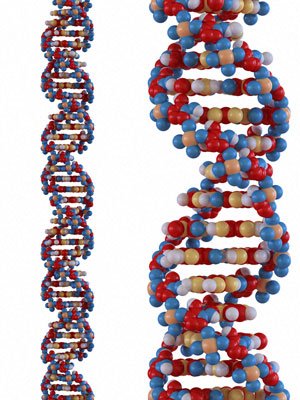Topic outline
-

Lecturers:
Prof. Dr. Noor Aini Abdul Rashid
Dr. Chan Giek Far
Semester: 2 (2011/2012)

SYNOPSIS :This subject will facilitate students to understand and visualize processes in cell biology and those responsible for DNA transmission and expression hence mechanisms by which bacteria inherit genetic information as the blue print of life. The lectures will explain relationship between structure and function in molecular biology and how this relationship operates to control biochemical processes. Topics include macromolecules like DNA, RNA and proteins and how processes like replication, transcription and translation operate, eukaryotic genetics. Students will cover related aspects such as mutation and mutagenesis, effects of mutation and how cells overcome mutation. Students will also learn about basic techniques in molecular biology as the basis for genetic engineering.

This work, SQG1143 CELLULAR AND MOLECULAR BIOLOGY by PROF. DR. NOOR AINI ABD RASHID AND DR. CHAN GIEK FAR is licensed under a Creative Commons Attribution-NonCommercial-ShareAlike 3.0 Unported License. Based on a work at ocw.utm.my. -
The Cytoplasmic Membrane & Cell Wall PDF document
This topic describes the cytoplasmic membrane and its function. It explains the importance of this component as to the survival of the cells be it a eukaryote or prokaryote. As it is selective in nature, it will only allow whatever it requires and excretes what it does not. The importance of integral membrane proteins is also described here as a means of transporting solutes across concentration gradient. In addition, this chapter also describes the cell wall and its function. The difference of prokaryotic cell wall among Gram Positive and Gram Negative bacteria will also be discussed. -
Chapter 2 will focus on DNA as hereditary material. You will learn about the process of replication beginning from the uncoiling of the supercoil to the separation of strands and synthesis of new DNA. The 5'-3' direction of the replication will result in the formation of the leading and lagging strand at the replication fork.
-
Chapter 3 describes the chemical difference between DNA and RNA, transcription by RNA polymerase, as well as the positive and negative regulation. Students will explore the regulation of the lac operon, antisense RNA and quorum sensing.
-
Chapter 4 will present to you on formation of polypeptide bond, protein structures, the translational processes and related regulatory mechanisms, as well as the important roles of ribosome.
-
Chapter 5-Eukaryotic Genetics
Now that you are already familiar with the prokaryotic replication, transcription and translational processes, let us get familiar with the eukaryotic processes. The general replication, transcription and translation processes are common to both. However, there are certain processes unique to either prokaryotes or eukaryotes that you have to take notice in order to differentiate both these groups of organism; either in terms of their complexity or simplicity. -
Chapter 6 will focus on prokaryotic gene transfer, that inculdes three major mechanisms of transformation, transduction and conjugation.
-
Chapter 7 describes different types of mutations and its effect to translated proteins. Students will also explore various types of mutagens and how cells overcome mutations.
-
From this last chapter of Chapter 8, students will learn about basic techniques in molecular biology as the basis for genetic engineering. The techniques covered will be related to genomic DNA isolation, separation of DNA, ligation to plasmids and blue-white screening.




